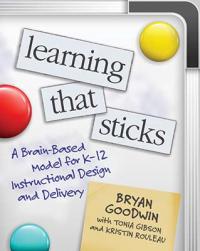
Extending and applying learning—using new knowledge and skills to solve complex problems, synthesize learning, or develop original ideas—helps us to weave new learning into richer, more complex neural connections in our brains, thus making learning more meaningful and engaging.
Often, though, this final phase of learning is glossed over in many classrooms. We teach something. Students commit it to memory. We test them on it. Then we move onto something else. It’s a time-honored approach—that doesn’t work. As cognitive scientist John Medina notes in his book, Brain Rules, students typically forget 90 percent of what they learn within 30 days of learning it in a classroom. As Medina puts it, “If you wanted to create an education environment that was directly opposed to what the brain was good at doing, you probably design something like a classroom.”
Remote learning, however, creates a new opportunity to redesign the entire process of learning. We can leverage students’ asynchronous and independent learning time to engage them in challenging learning tasks that disrupt their “forgetting curves” by providing them with opportunities to apply their learning to solve real-life problems or engage in critical thinking about their learning through personally relevant projects.
Here are a few tips, drawn from research, for helping remote learners extend and apply their learning:
- Extended writing tasks. Research shows the power of extended writing tasks to engage students in critical thinking and deep learning in all subject areas—including reading comprehension, science, social studies, and even Extended writing tasks require students to write a paragraph or more of, for example, in-depth analyses of literature, explanations of scientific phenomena, and evidence-based historical claims. When students write, they make meaning of, and synthesize, prior learning. But what if students lack access to laptops or word processing software? No problem. As it turns out, they can still engage in the same mental processes and deep learning if they simply write assignments by hand and text images of completed assignments to teachers.
- Student-created online magazines. If students do have access to laptops and internet, they can work together to create student-led online magazines written for their peers. Teachers can facilitate their selection of topics to write about—such as history, current events, science, and society. Students independently research topics, use data and statistics to support their findings, develop graphics to convey ideas, peer-edit articles using teacher-provided rubrics, and self-organize to manage workflows. Through these extended learning opportunities, they develop and apply a wide array of knowledge, skills, and competencies—including research, critical thinking, writing, data and statistics, and collaboration. Here’s a free resource from classroominc.org and a list of student-friendly magazine-making software that can help you get started.
- Student-created documentary videos. Students can also synthesize what they learn during a unit of study into videos about history, science, literature, and foreign language. Doing so can require them to investigate topics of interest to them, write and edit video scripts, and create infographics to show what they’ve learned. At the same time, students can be addressing relevant communications standards. Writing for Edutopia, elementary teacher Courtney Sears suggests four types of student-created videos: learning product videos (summative assignments to show what they’ve learned); response videos (brief videos in response to a teacher question); reflection videos (students sharing about their learning experiences—which strategies worked and which did not); tutorial videos (students describe the process for doing something they’ve learned to do).
- Engaging students in problem-based learning. Numerous empirical studies also show that students (including those with disabilities) better learn and retain concepts more deeply when they engage in problem-based learning—apply what they’ve learned to solve complex real-world problems in a variety of subject areas. For example, they might apply mathematics to calculate the perimeter of a yard and develop cost estimates of building materials, or calculate the total cost of ownership of different automobiles. The idea is to frame a problem for students that requires them to apply the concepts, skills, and academic vocabulary they’ve gained during a unit of study to solve the problem.
- Engaging students in developing and defending their own position on controversial topics. Research shows students dive more deeply into learning when topics are presented to them as real-world controversies. During a unit of study, they research and develop their opinion on the controversial topic (such as reintroduction of wolves, the electoral college, vaccinations) and then develop their own arguments in favor of or against a particular position (or even argue both sides). The idea here, of course, isn’t to guide students to take a particular stance on the topic, but rather to encourage them to research both sides of a controversy so they can develop and support a cogent point of view.
Extending and applying learning takes extra time, of course. But it’s time well spent, especially as the traditional teach-study-test approach to unit design leaves students forgetting nearly all of what they have learned within a month of learning it.
You’ve probably also noticed the repeated references to engaging students in writing tasks. According to research, students of all ages should spend at least one hour per day engaged in writing for a variety of purposes (description, narration, information, persuasion, and analysis) and across content areas. Fortunately, remote learners can easily engage in writing—during synchronous or asynchronous learning time—and while using digital or analog (pen and paper) technology.
In my next (and final) post in this series, I’ll discuss how you can integrate all of these ideas to design units that challenge and engage remote learners.

